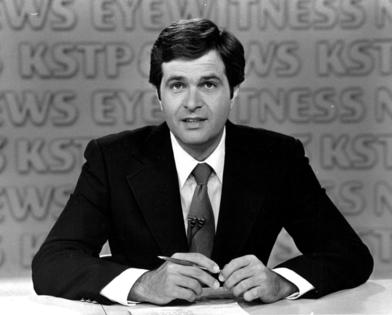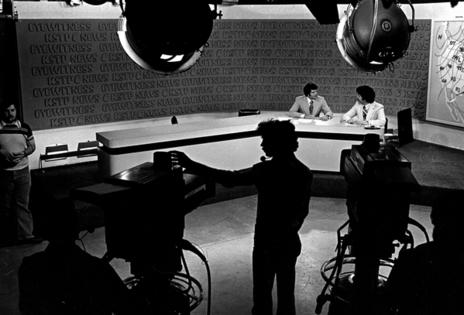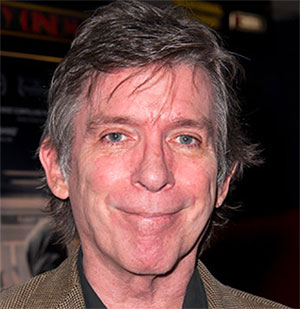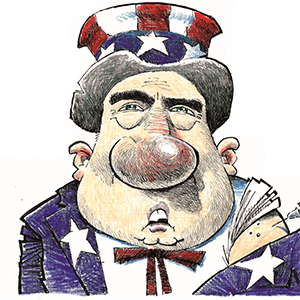Neal Justin: 'Broadcast Wars' recalls when local anchors were royalty and at each others' throats
Published in Entertainment News
MINNEAPOLIS — TV anchors are the closest thing Minnesotans have to celebrities. If Amelia Santaniello walks into your neighborhood Caribou Coffee, you might choke a little on your pumpkin latte.
But TV anchors’ current status pales in comparison to how they were regarded in the ‘60s, ‘70s and ‘80s, the setting for the deeply researched, highly emotional project, “Broadcast Wars.”
The two-hour film, airing at 7 p.m. Tuesday on TPT (Twin Cities Public Television), will remind older viewers of a time when reading local headlines on camera earned you more clout than most city politicians ever amass.
It’s occasionally a fun history lesson. Co-executive producer Cathy Wurzer, who also narrates, peppers the documentary with vintage clips of corny commercials, bloopers, fashion faux pas and cheesy promotions. You’ll howl at sports anchor Hal Scott’s loud jackets and KARE 11’s promotional videos from the ‘80s in which their newscasters pelted each other with snowballs in an effort to prove they were as tight as the crew manning “The Love Boat.”
But “Wars” is most interested in living up to its provocative title.
It’s a cautionary tale of how a drive for audience and profit comes at a price. Wurzer points out that there was a time when the news division was responsible for 60% of a station’s profits. That might be great for the bottom line but not necessarily for employees’ mental health. Local news stations became pressure cookers where sexism, racism and jealousy were allowed to boil, as long as the ratings stayed high.
The former household names allow themselves to be vulnerable, probably because the interviews were conducted by Wurzer, a respected peer who logged time at WCCO-TV before becoming a staple at MPR and TPT.
Pat Miles, who worked for both WCCO and KARE, shares how, at the height of the battle to be No. 1, she had a panic attack during a commercial break. She gets emotional when she remembers how the beloved Dave Moore insulted her during one of his final evening broadcasts, promising that he’d be still be around to help her with “the big words.”
“I went home sick to my stomach,” she says. “I’m still not over it.”
Toni Hughes’ daughters discuss the resistance their mom faced when she became the market’s first Black weather reader. Former KSTP-TV anchor Cyndy Brucato recalls how she was “almost clinically depressed” after getting fired.
KSTP’s Ron Magers and WCCO’s Don Shelby are both open about how they leaned too hard on booze to deal with the stress while veteran reporter Lou Harvin talks about the emotional toll of covering certain stories.
“I never cried on air,” he says. “But I could be sitting at the Thanksgiving table a year later, and it would hit me.”
We get a glimpse into the rivalries, particularly between Shelby and KARE’s Paul Magers in the ‘80s. WCCO personalities joked on-air about the competition’s lighter approach to the news — until the NBC affiliate’s stellar live coverage of a 1986 tornado forced them, and the audience, to take the upstarts more seriously.
But the real “enemies” in the film are the press and consultants.
It’s clear that some of the anchors are still bristling over comments made by local newspaper columnists, a reaction that seems to amuse former Pioneer Press critic Brian Lambert rather than disturb him.
KSTP’s reliance on marketer Frank Magid, who practically invented the concept of “action news,” triggered much drama, including wildly popular anchor Ron Magers’ decision to move to Chicago, an exit that Hubbard CEO Stanley Hubbard still can’t seem to forgive more than 40 years later.
“We made him a star and he double-crossed us, as far as I’m concerned,” says Hubbard, whose company owns KSTP.
Despite the pressure — or perhaps because of it — the Twin Cities market became a model for how local news could be done.
KSTP was the first station to offer viewers a daily newscast. It also became an innovator in adapting satellite coverage. WCCO’s Walt Lyons was one of the country’s first trained meteorologists to do the weather, kicking off a trend that replaced those who relied more on schtick than science. The CBS network was so enamored of its Minneapolis affiliate that it poached 15 correspondents from the station over the course of 10 years.
There are many reasons to celebrate the local TV market’s accomplishments during this time period. They set the table for today’s Twin Cities TV journalists, who consistently rank among the best in the country. Tune into the local newscast the next time you’re on the road; you’ll appreciate our hometown teams even more.
The overall theme of “Broadcast Wars” is that pulling down high salaries and huge audiences can mean personal sacrifices that aren’t always worth the luxuries of fame.
“It was cutthroat in a lot of ways, it really was,” Miles says. “And a little bit scary.”
_________
©2024 The Minnesota Star Tribune. Visit at startribune.com. Distributed by Tribune Content Agency, LLC.
















Comments